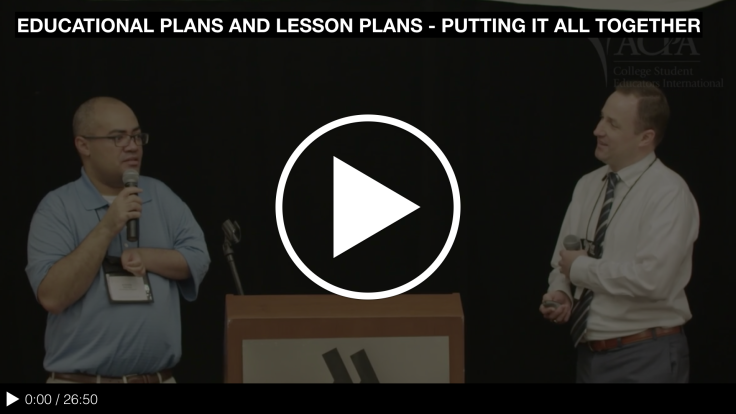Once a department or division articulates the goals, outcomes, and objectives it hopes to achieve, and they’ve undergone the work to rubric, map, and sequence these objectives, the final step in the process is the development of an overall educational plan. Educational plans function much like blueprints. As plans, they outline time-based progression through the curriculum. They include all major components of the curriculum (from the Educational Priority to Goals, Outcomes, and Rubrics) and include all of the facilitation guides for each individually executed strategy. In short, your educational plan is the master document of your entire curriculum.
Different institutions develop and use their educational plans differently. In most cases, a “master” educational plan is developed. This master educational plan is the singular source from which curriculum is put into practice. In the case of residence life, individual hall communities may each develop educational plans utilizing this master plan as the base. Having one educational plan and allowing for community modifications, however, does not mean that each staff member or area does something completely different. Instead, the educational plan can be seen as the base upon which individual needs may be accounted for through additional or alternative engagement strategies. In this sense, the plan acts like “bumpers” on a bowling alley. It narrows the focus, defines a range of variance, and ensures that staff are still delivering a curriculum within an agreed upon range.
Departments or divisions may also wish to develop multiple related educational plans. Perhaps it is easier in practice to develop different educational plans based on a student’s class year. In this case, a department may have a first year student and a second year student educational plan. Although these may be separated in practice–perhaps due to one’s buildings being segregated any class year–they nevertheless are related and demonstrate a seamless learning progression from one plan to the next.
Instead of having multiple educational plans, some institutions develop a master educational plan and have supplemental curricula that add an additional layer for a particular population or community. For example, a residence hall may have a living learning program (LLP) component. Students participating in this LLP still need to learn the same things as their non-LLP counterparts, but they may have a more specific focus as a result of their program. In this case, some institutions may develop educational co-plans. You can think of these co-plans as “riders” or an addendum that supplements the main educational plan. This allows for unique community learning while ensuring consistency across a curriculum.
The above video from ACPA’s Institute on the Curricular Approach (ICA) (formerly the Residential Curriculum Institute, RCI) provides more detail on the development of educational plans. Educational plans are your opportunity to “put it all together.” They also form the basis of many internal and external review processes since they are the final record of all goals and planned actions in a curriculum.
After the development of an educational plan (or plans) many institutions will develop workbooks containing the entire plan for staff to utilities in its execution. Specifically in the case of residence life, which employs and relies on many student staff members to execute its plan, a workbook helps outline an educational plan in an accessible way that helps staff understand their roles and duties in executing the curriculum. Workbooks can include week by week task lists, calendars, facilitation guides, and helpful reminders and tips for the staff member.
Key Questions:
- How will you structure your educational plan? Will you have one or multiple?
- How will you account for special populations or communities with your educational plan?
- How will you revisit, review, and revise you educational plan(s) based on assessment data and feedback?

